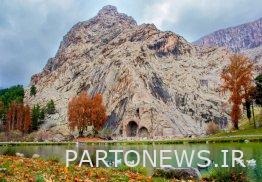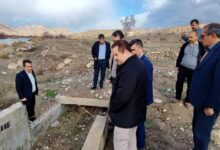Kermanshah province tourist routes: Kermanshah city

Over the years, attention to this city has led to its prosperity and development and the emergence of great cultural figures, an issue that is important today from a tourism and cultural perspective.
The historical history of human life in the city of Kermanshah dates back to the Stone Age. Even some speculations indicate a million years of continuous life in the caves of this city. This city, which has always played the role of the capital of Kermanshah province and even the west of Iran due to its geographical and cultural orientation, has a spectacular cultural and ritual diversity, so that it bears the title of India of Iran. The same diversity that has been created as a result of a positive cultural approach eventually led to Kermanshah being named a UNESCO Creative Food City in 1400.
Despite the eight-year imposed war in the city and the destruction of much of the city’s infrastructure and the lack of strengthening tourism issues in the city, fortunately in recent years, attention to the city has been on the agenda, which hopes to accelerate further.
Perhaps the most important tourist attraction in western Iran is the magnificent Sassanid monuments that have been excavated in the heart of a mountain called Taghobestan in the north of Kermanshah. Taghbestan is one of the Sassanid lithographs that was written about 17 centuries ago by the order of the Sassanid kings. The existence of these monuments has made Kermanshah one of the few cities in Iran that has historical monuments of this age within the city itself. For travelers traveling to Kermanshah, seeing the glorious Sassanid historical monuments next to the beautiful lake and high mountains will create unforgettable memories. In general, the crowning role of Ardeshir is adorned with the existence of the goddess Mehr and the lotus flower, a small arch with two reliefs of the second and third Sassanid Shapur and valuable inscriptions in which the great name of Iran is written and finally the large arch which is the peak of Sassanid art. The most important works of this site are historical. In the Great Arch of Khosravi II, in the presence of the goddess Abha Anahita, the king on horseback, two stone animations of boar hunting and deer hunting, the Greek goddesses Nike and the tree of life are skillfully put together to make one of the most unique historical monuments. Figure out the ancient world.
Existence of historical monuments in the high mountains of the north of the city, tourist parks around and the opportunity to try the original taste of kebab ribs and stew during Kermanshahi in restaurants on the outskirts of the arch has caused the most focus of tourists on this part of the city. But all this does not cause the identity of the historical context of the city and the traditional bazaar of Kermanshah to be neglected.
Kermanshah city market, which flourished during the Qajar period, is one of the longest markets in Iran, which has been a safe haven for many artisans since ancient times. Although its occupational context has changed today, the beautiful superiority of tradition over modernity can still be sought in its place.
During the years of prosperity, the market of valuable architectural works has been created, which today forms a part of the urban tourism identity of Kermanshah. Reliance of Biglerbegi with its unique mirror work, Emad al-Dawla Mosque due to its beautiful tiling, Shahbaz Khan Mosque with ancient columns used in it, Shahbaz Khan historical bath, Royal Bank building and finally the reliance of the Deputy King or a certain Hosseiniyah which is the top of the market attractions. The Deputy Minister is the largest reliance in Iran, which was built during the Qajar era. This reliance is due to the seven-color tiles that depict religious stories from the Ashura event, Quranic stories, mythological motifs and national and religious dignitaries, as well as the architectural buildings of their time.
Along Kermanshah Bazaar, there are various orders, one of the most attractive of which is the order of rice cookers, where the pleasant smell of fresh sweets does not leave a way to resist. Rice bread, coke bread, sugar bread, date bread, beige, oily bread and Kermanshahi oil are part of the souvenir of the creative city of UNESCO, which fortunately is of interest to tourists.
In the continuation of the beautiful rows of Kermanshah bazaar, we reach a section that is known as the row of bazaars due to its colorful Kurdish fabrics. Seeing this part of the market captures the heart of every viewer. The Sunni mosque of Kermanshah, ie Shafei Mosque, is located along this part of the bazaar, which is unique in its kind among all mosques in Iran. This mosque has a wonderful architecture as if it were a separate taffeta.
The city of Kermanshah, in addition to the historical and cultural monuments that it has placed in its heart, fortunately does not benefit from the gift of nature. The Nature Battalion has used the name of this last beautiful order, the Bazazs, for one of the most beautiful natural straits in Iran. Bazazkhaneh Strait, which is similar to the ancient caves in a row on the left and right, is similar to the market cells, which are decorated with colored flowers like cloth on the head of the cell. This is a part of the beautiful Cherober Strait (Chalabeh) which is located on the edge of Paravo Mountain in Kermanshah. A mountain that is world famous for its vertical and impassable caves. It is the existence of these numerous mountains that make Kermanshah prone to mountaineering and rock climbing activities.
In the continuation of the natural gifts of Kermanshah, we should mention the lotus mirage, which takes its name from the lotus flowers of the swamp, whose historical roots should be found in the lithograph of Ardeshir Sassanid. This beautiful mirage is located 15 km away from the city.
In general, the city of Kermanshah offers a complete package of historical, religious, cultural, natural and گردشگری tourism, which can have many professions to offer by strengthening the infrastructure of the facility.

